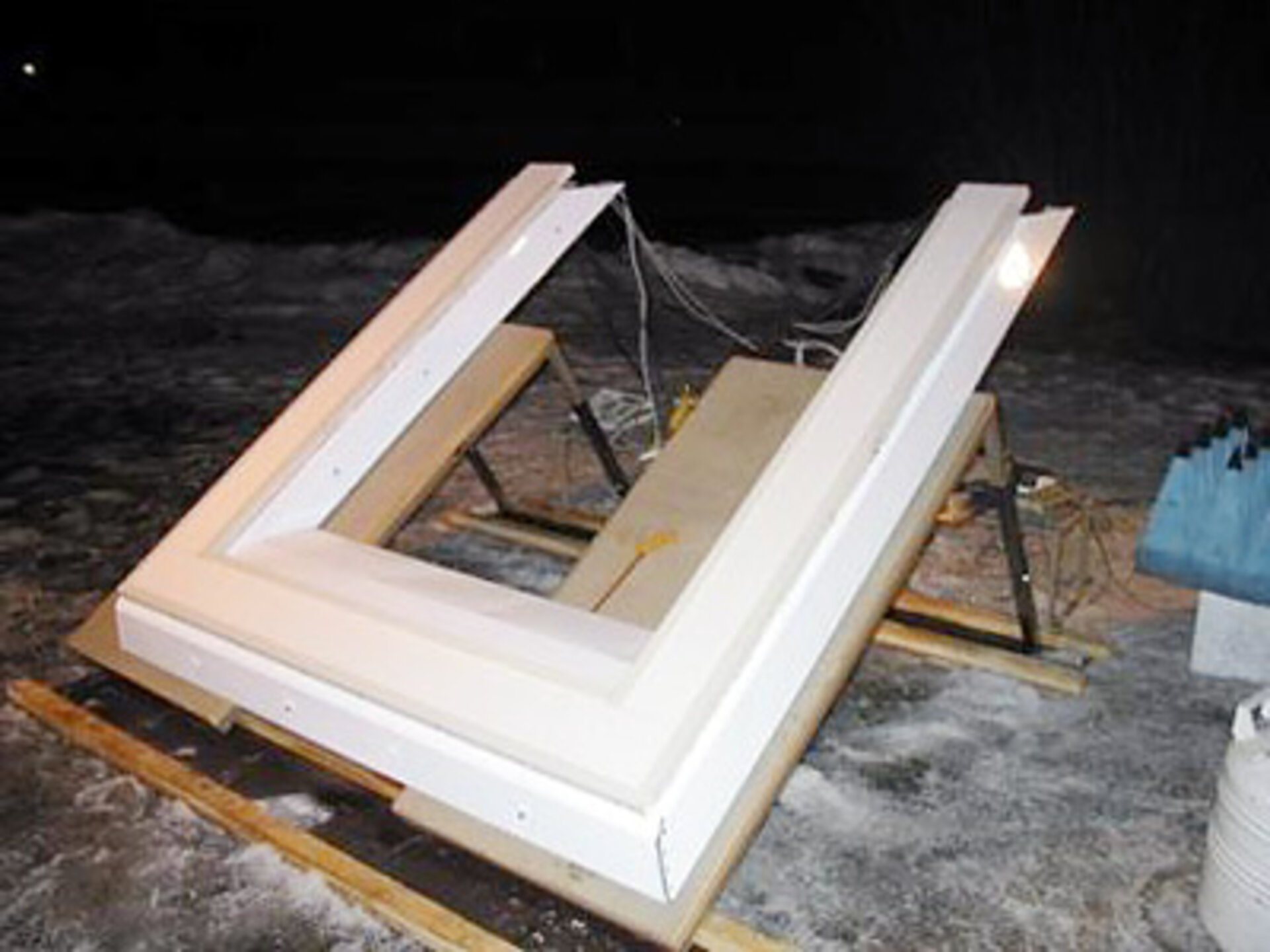First images from Finnish radiometer support SMOS
A significant milestone in the framework of the SMOS mission has recently been achieved with the completion of the new Finnish HUT-2D airborne instrument and the subsequent accomplishment of two major results.
Developed by the Helsinki University of Technology, the airborne L-band aperture synthesis radiometer, HUT-2D, has provided the first ever image of the Milky Way by a two-dimensional L-band interferometer with sub-wavelength spacing. The instrument has also undergone the first successful airborne demonstration of the complete system. These are considered major steps for ESA's Soil Moisture and Ocean Salinity (SMOS) mission, as they gain experiences on data processing, calibration and utilisation of this novel technology.
The Helsinki University of Technology started the development of the HUT-2D in the 1990s. The instrument is similar to the SMOS instrument MIRAS (Microwave Imaging Radiometer using Aperture Synthesis). The HUT-2D employed new calibration techniques, which were later applied to the SMOS mission. This complex and sophisticated instrument is now intended to be used in calibration and validation campaigns to assess retrieval algorithms for soil moisture and ocean salinity.
The HUT-2D is similar to the purpose-built AMIRAS (Airborne MIRAS), the development of which was led by EADS-CASA Espacio. Both instruments will fulfil similar roles in airborne campaigns dedicated to the calibration and validation of SMOS.
The HUT-2D instrument consists of 36 receivers arranged in a U-shape providing 6° angular resolution within a 50° field of view, the narrowest beam ever achieved with an L-band airborne radiometer.

The performance of this complex instrument was put to test on a cloudy snowy night between 11 and 12 April 2006, when it was pointed towards Denneb in Cygnus, a region of high L-band emission of our Milky Way. Applying state-of-the-art calibration techniques, which will be later used in SMOS, the galaxy was clearly visible.

HUT-2D's maiden flight took place just some weeks later on 30 May 2006, attached to the belly of Helsinki University of Technology’s Short SC7 Skyvan aircraft. The aircraft flew over the islands along the southern coast of Finland to test the imaging capabilities of the instrument in airborne conditions. With relatively simple processing, images of the coastlines were successfully acquired, as well as viewing different terrains and vegetation. The full processing of the data is currently underway.
ESA's SMOS Project acknowledges the very hard work carried out by the Technical University of Helsinki team and the Skyvan crew, which has lead to such excellent achievements. The first image acquired with the HUT-2D (that of the Milky Way), will pass as a major milestone within the development of the SMOS mission, but also in the history of aperture synthesis radiometry for Earth Observation. Well done HUT, you have been the first!





